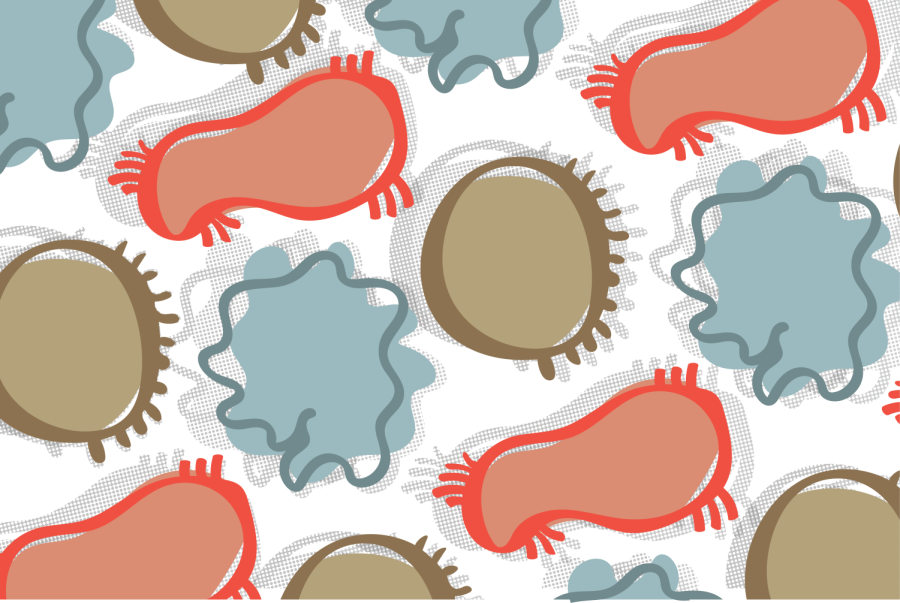Chemistry students at the University of Minnesota are advocating for increasing “green chemistry” to combat the historical production and use of toxic chemicals similar to things like PFAS microplastics.
From the University’s American Chemical Society chapter to the Sustainable and Green Chemistry Committee to the Center for Sustainable Polymers, University students are trying to find ways to learn about and practice sustainable chemistry.
“I like being able to educate the general chemistry public and then also just the general student body…on the importance of doing sustainable chemistry and green chemistry and also how we can find green chemistry in what we’re already doing,” Carolyn Dewey, fourth-year chemistry student and vice president of the University’s American Chemical Society student chapter, said.
University’s Sustainable and Green Chemistry Committee gets award
Dewey, along with the University’s American Chemical Society chapter president Josh Gann, received a Green Chemistry Chapter Award in October on behalf of the University’s Sustainable and Green Chemistry Committee. The award is from Beyond Benign, an organization that advocates for sustainable chemistry education and implementation.
Dewey and Gann received the award for their work organizing events with interactive demonstrations to educate and share green chemistry activities with their fellow chemistry students.
“You get a lot more membership when you have demos that people can interact with,” Gann said.
In one event, participants created Halloween decorations from molds using chitin, a renewable polymer material found in crustaceans and insect exoskeletons and in some types of fungi. This was meant to show an alternative to the most commonly used polymers, which are derived from petroleum and often used to create synthetic materials like plastic.
In another event, participants made edible water capsules to learn biodegradable methods of packaging drinking water. The group has even had viewings of fictional TV shows like “The Simpsons” to break down ways green science can be shown or implemented.
This form of education and advocacy for sustainable chemistry is now more important than ever, according to some chemistry scholars.
“Historically, chemistry was very focused on solving very functional problems, you know, a plastic bag or making a drug,” Jane Wissinger, professor and Sustainable and Green Chemistry Committee faculty member, said. “[There was] a very narrow lens on that functionality and not taking into account…the broader picture, like, what is the impact of making this product?”
For example, PFOS, which is a specific type of PFAS chemical, has recently come under scrutiny for its harm as a pollutant, but it has been used in fire-fighting foams and other products that are beneficial to society, Wissinger said.
“It wasn’t taken into account how long [these chemicals] would last in the environment and their toxicity, so that’s where chemistry got into trouble by having the blinders on,” Wissinger said.
Along with this course correction have come ample job opportunities for students willing to go into the field of green chemistry.
A 2021 study conducted by the U.S. Department of Labor found 81% of consumers feel strongly that companies should work toward helping the environment. The study also predicted by 2029, there would be a 4.7% increase in careers in this field.
However, for the undergraduates involved in chemistry at the University, the motivation goes beyond financial rewards.
Creating a lasting impact through research
While students can join groups to gain education in and advocate for sustainable practices, they are also able to practice what they have learned in research and laboratory settings.
More than a dozen undergraduates assist in conducting research at the University’s Center for Sustainable Polymers.
“There’s a tremendous amount of interest among students in general and undergraduates, in particular, to work on environmentally relevant topics that have a sustainability emphasis,” Marc Hillmyer, professor and director of the Center for Sustainable Polymers, said. “They’re seeing it in their classes, and they’re seeing the negative effects of environmental pollution.”
Undergraduates, who often work in cooperation with graduate students and post-doctoral researchers, are currently working on synthesizing polymers using non-toxic reactions with limited waste production and finding practical uses for these products.
Sam Nguyen, a fourth-year undergraduate researcher conducts research on ways to make polyethylene, the most widely produced polymer in the world, more easily recyclable and degradable.
“Only 7% of polyethylene is recyclable right now, and even then, the recycling process is very difficult to do, so we wanted to make it more degradable so that we can reuse that polyethylene,” Nguyen said.
This project would have potentially widespread applications ranging from milk jugs to plastic packaging.
“It would replace anything you see with that recyclable symbol with a 2 on it. Everything that has that is made of polyethylene,” Nguyen said.
Nguyen said he started working in the Center for Sustainable Polymers because he is passionate about preserving a sustainable environment.
“I wanted to particularly focus on plastics because of the plastic pollution problem that we have that’s so widespread,” Nguyen said. “Being able to see real-world applications of the research like that is important to me.”
From advocacy to laboratory research, many undergraduate chemistry students have devoted themselves to improving the field of chemistry and healing past environmental harms.
“They’re all looking to incorporate green chemistry into the curriculums, into safety within labs,” Gann said. “Having green chemistry will provide for a better future with more opportunities to grow and learn.”
More information on how to get involved can be found on the University’s student chapter of the American Chemical Society’s webpage.





















